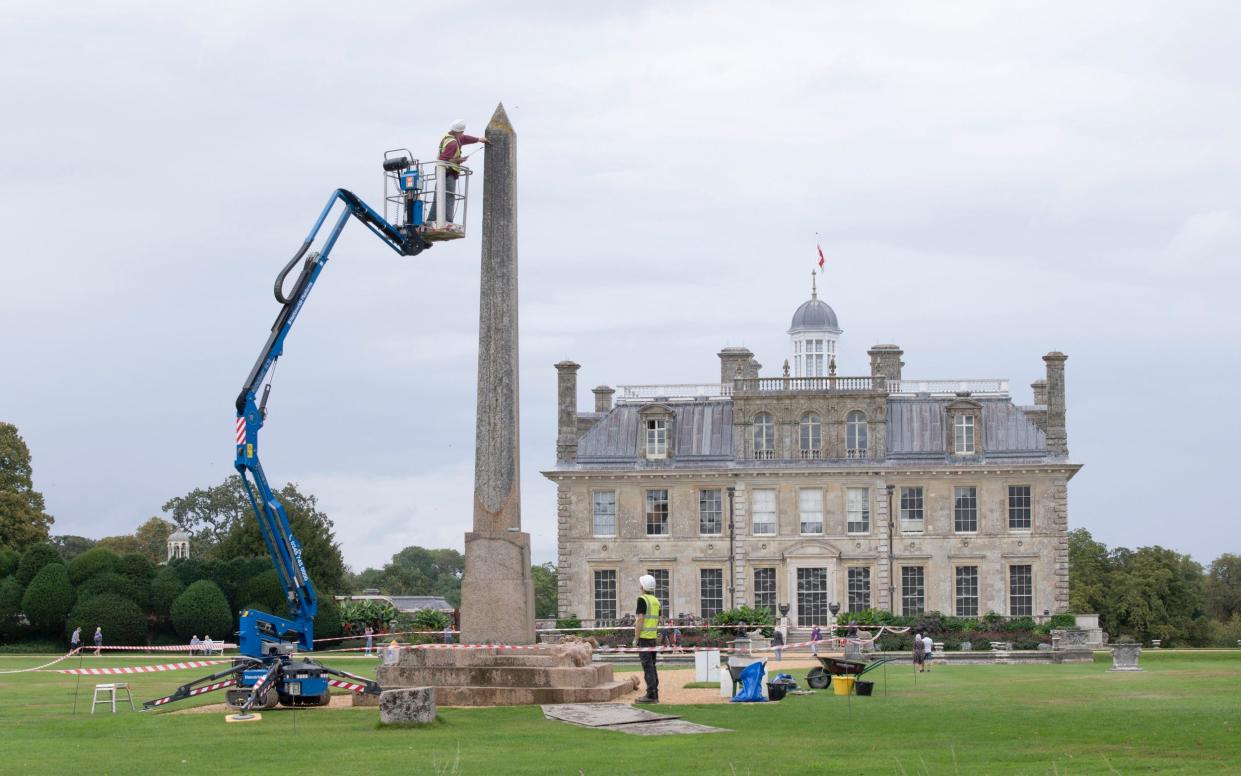Hidden Treasures of the National Trust, review: lovely TV, but there’s an elephant in the room

It may just be that watching a team of specialist art movers lowering a giant Rubens from a defunct picture rail is perfect television. You want jeopardy? How about when the cable on the winch gets jammed and the onlooking National Trust employees charged with the restoration flinch like they’ve stepped on a pin. You want high stakes? The Marchesa Maria Sella Pallavicino (1606) is priceless, enormous, very old and very fragile. Don’t drop it.
You want tension? The director of this first episode of series two of Hidden Treasures of the National Trust (BBC Two) provides: the lowering is played out in excruciating detail and at nail-gnawing pace. Yes, Hijack with Idris Elba was edge of the seat stuff, but a Rubens moving at literally centimetres per minute is my first pick for the Virgin TV Bafta Squeaky Bum Must-See Moment for 2024.
Spoiler: they didn’t drop it. But they did find themselves singing the DIY’ers lament, which is when the solving of one small problem merely opens up a raft of worse ones. The picture rail was indeed a bust. That meant every picture in the grand salon at the wonderful 17th-century Dorset palace Kingston Lacy had to come down. Everything took ages, all managed by the sort of diligent experts who are actually good at something other than sending emails, but in the end the picture rail was replaced, the masterpieces were winched back up and a series of very slow disasters were very slowly averted.
Catastrophe, of course, would also have been entertaining, but it wouldn’t really have been in the spirit of Hidden Treasures of the National Trust. It’s a series so twee that dledum and dledee should sue, but there’s therapy to be had in the slow burn. Watching the Shell Gallery (like a child’s bedroom after a trip to the seaside) at the remarkable A la Ronde house on the Devonshire coast being restored, piece by piece; or the Egyptian obelisk in front of Kingston Lacy, brought to the house by the collector William John Bankes in the 19th-century, reminded you that the brief vogue for “Slow TV” from a few years ago is much missed.
I mention the Egyptian obelisk on the manicured lawn, however, because it stuck out like a nine-metre-high Egyptian obelisk on a manicured lawn as a reminder of how our forefathers’ passion for “collecting” was often what we would now call “theft”. Whether what the series calls “our priceless heritage” is actually ours is an increasingly sore point.
Hidden Treasures didn’t ignore the issue of items acquired during Britain’s plunderous colonial past, but the explanation provided by a willing NT-er felt a little undercooked: “The ethics of collecting is something that we think about a lot, very rightly. What we need to do is research our objects, understand their provenance and make sure that we can tell the full histories of these objects.”
Not, you note, give them back. Maybe best to just keep those treasures hidden and hope that nobody in Egypt watches BBC Two.
Series one and two of Secret Treasures of the National Trust are available on BBC iPlayer now


